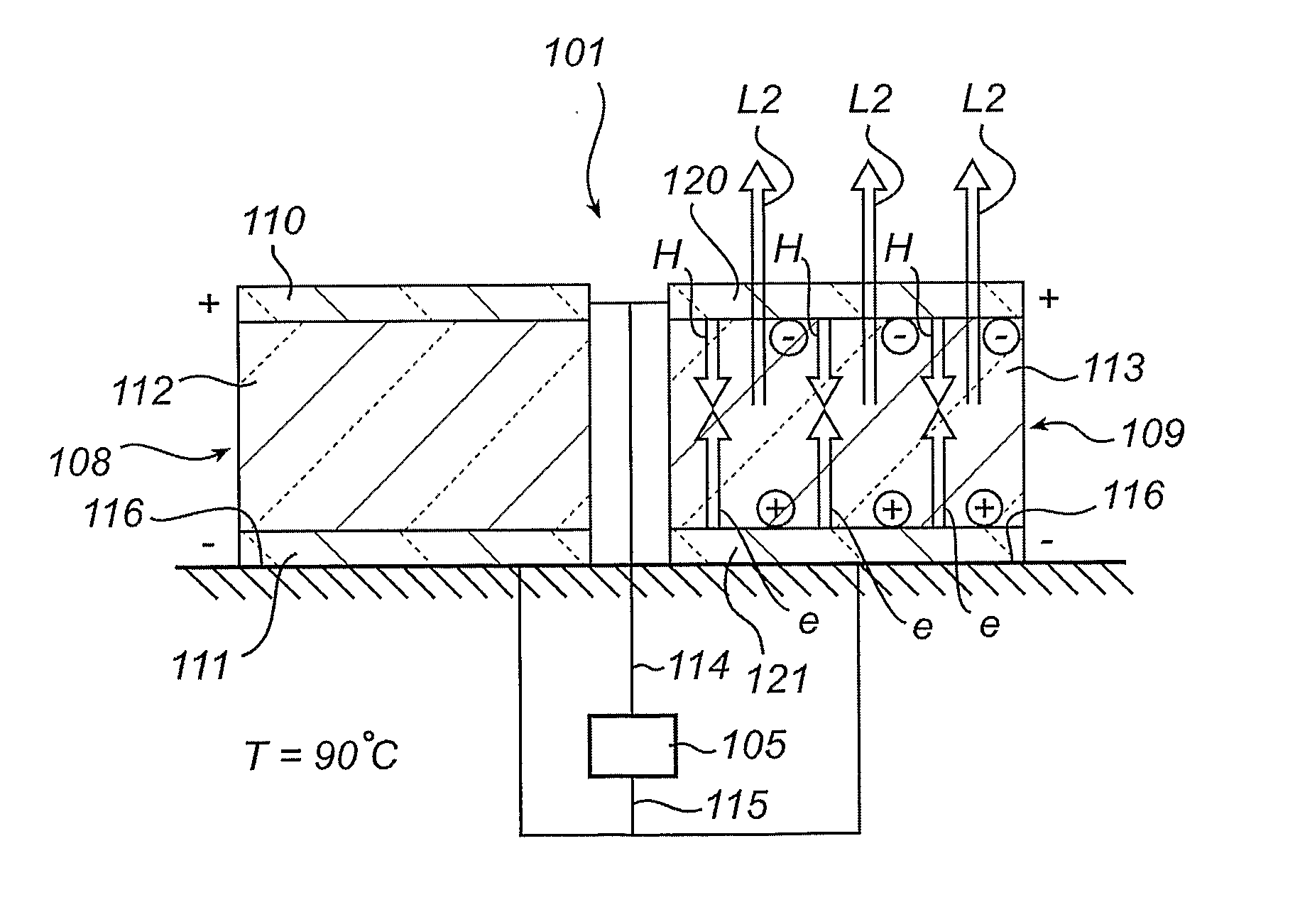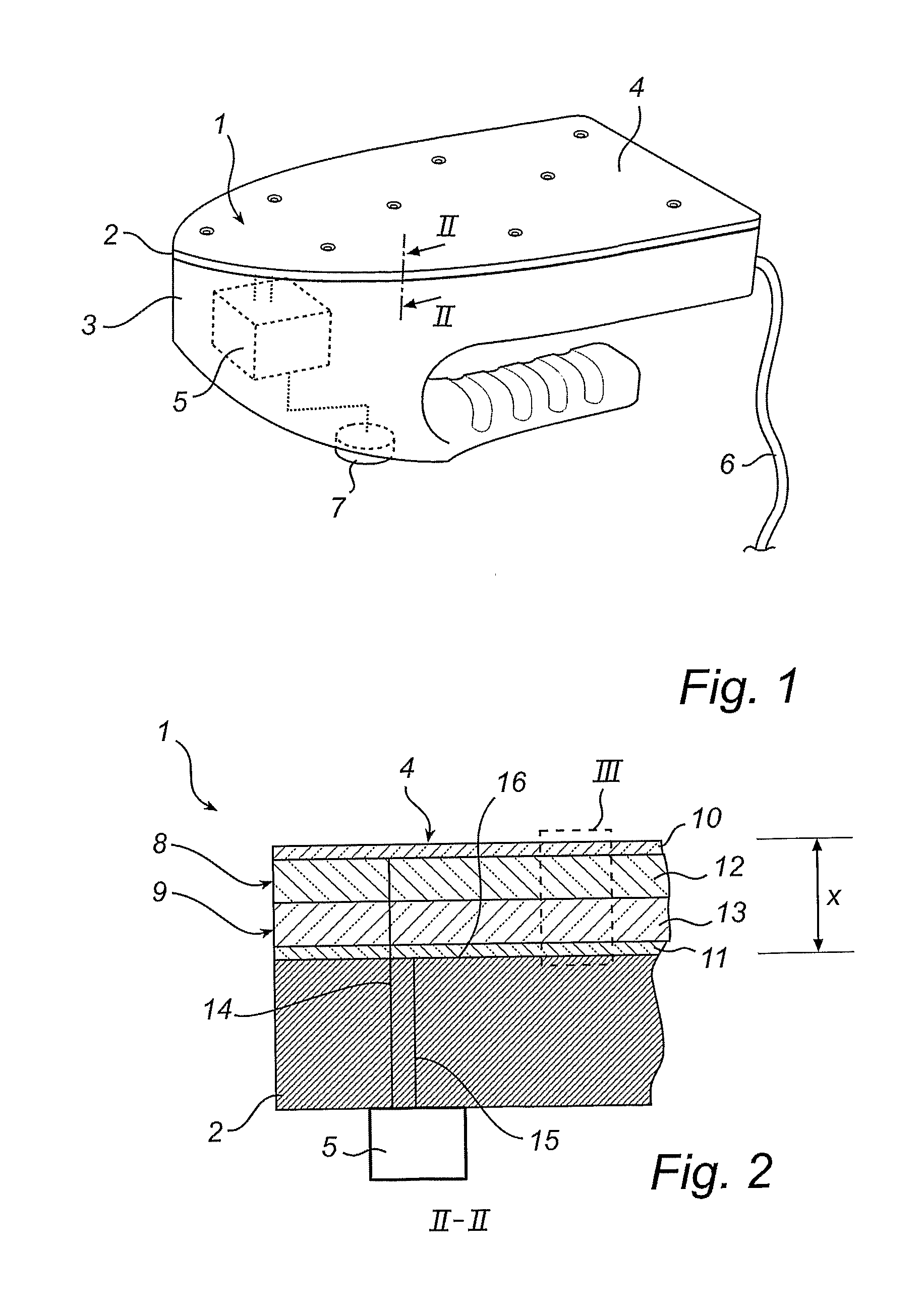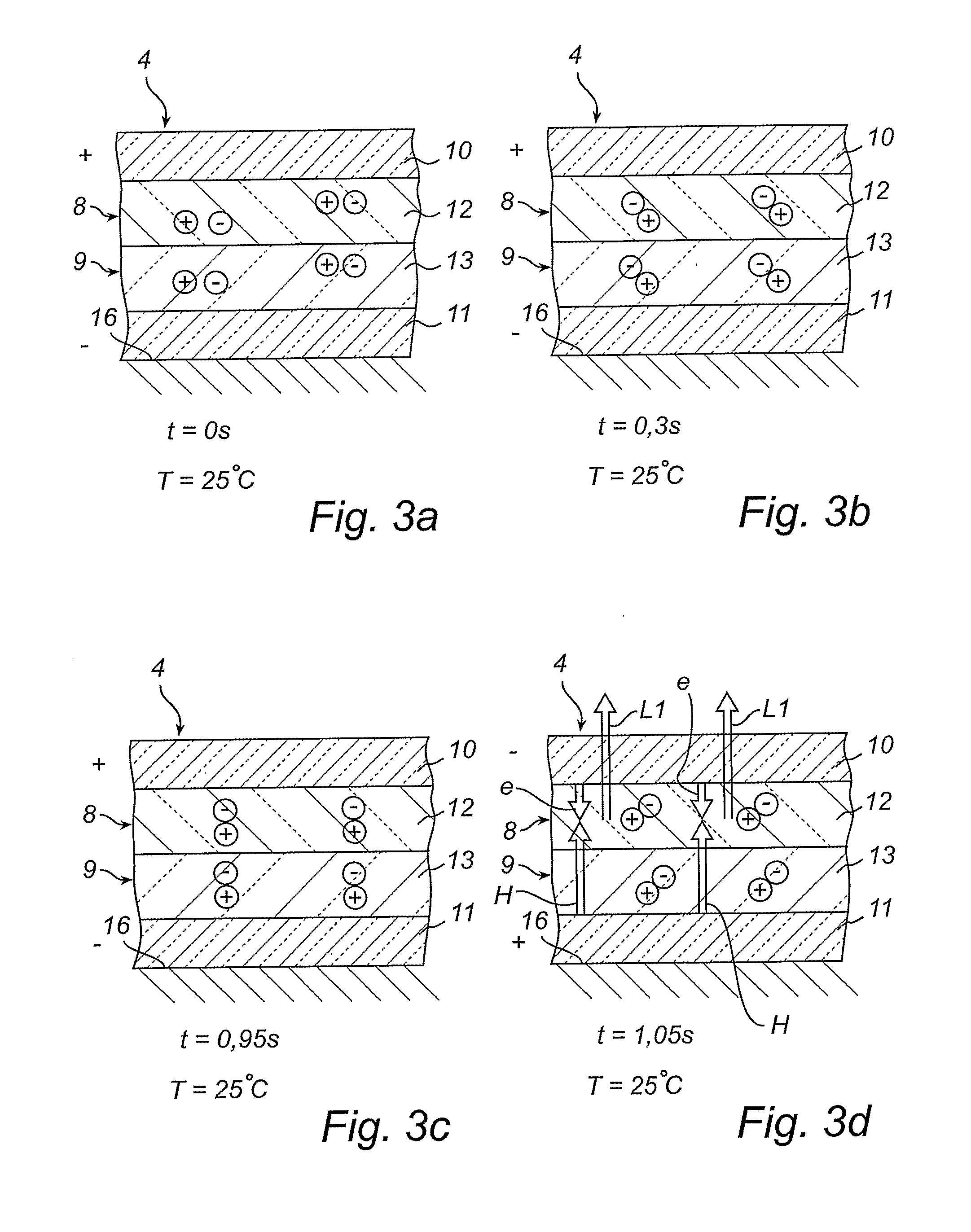Colour Switching Temperature Indicator
a temperature indicator and colour switching technology, applied in the field of temperature indicators, can solve the problems of incorrect impression of cold iron by users, and the temperature indicator of this type does not give any information as to which part of the surface, and achieve the effect of low cos
- Summary
- Abstract
- Description
- Claims
- Application Information
AI Technical Summary
Benefits of technology
Problems solved by technology
Method used
Image
Examples
first embodiment
[0039]FIG. 1 shows schematically a temperature indicator 1 according to the invention. The temperature indicator 1 covers the entire sole 2 of an iron 3. The temperature indicator 1 comprises, as will be described below, a light-emitting diode and a light-emitting electrochemical cell, forming together a light-emitting laminate 4, and an AC power source 5 adapted to drive the light-emitting laminate 4 with a low frequency AC voltage. The AC power source 5 is connected to the main electricity system (not shown in FIG. 1) of the iron 3 and provides the light-emitting laminate 4 with an AC voltage all the time the electrical cable 6 of the iron 3 is connected to a power supply. An AC voltage frequency modulator 7 could optionally be included in the temperature indicator 1 in order to enable fine-tuning of the temperature at which the light emission should change, as will be explained below.
[0040]FIG. 2 is a cross section showing the light-emitting laminate 4 having the shape of a thin ...
second embodiment
[0062]FIG. 6a is a schematic illustration of a temperature indicator 101 according to the present invention. The temperature indicator 101 comprises a light-emitting diode 108 and a light-emitting electrochemical cell 109. The light-emitting diode 108 has a low work function first electrode 110, a high work function second electrode 111 and a semiconducting first light-emitting layer 112, which is adapted for the emission of blue light L1, sandwiched between the electrodes 110, 111. The light-emitting electrochemical cell 109 comprises a first electrode 120, a second electrode 121 and a second light-emitting layer 113, which is adapted for the emission of red light L2, sandwiched between the electrodes 120, 121. The second light-emitting layer 113 comprises a matrix and ions that are movable within the matrix. The diode 108 and the cell 109 could be placed adjacent to each other or at some distance and at least one of the electrodes of the cell 109, in the example the second electro...
third embodiment
[0069]FIG. 8a is a schematic illustration of a temperature indicator 201 according to the present invention. The temperature indicator 201 comprises a light-emitting diode 208 and a light-emitting electrochemical cell 209. The light-emitting diode 208 has a low work function first electrode 210, a high work function second electrode 211 and a semiconducting first light-emitting layer 212, which is adapted for the emission of blue light L1, sandwiched between the electrodes 210, 211. The light-emitting electrochemical cell 209 comprises a first electrode 220, the second electrode 211, which is thus common with that of the diode 208, and a second light-emitting layer 213, which is adapted for the emission of red light L2, sandwiched between the electrodes 220, 211. The second light-emitting layer 213 comprises a matrix and ions that are movable within the matrix. The diode 208 and the cell 209 are thus placed on top of each other and their respective light-emitting layers 212, 213 are...
PUM
 Login to View More
Login to View More Abstract
Description
Claims
Application Information
 Login to View More
Login to View More - R&D
- Intellectual Property
- Life Sciences
- Materials
- Tech Scout
- Unparalleled Data Quality
- Higher Quality Content
- 60% Fewer Hallucinations
Browse by: Latest US Patents, China's latest patents, Technical Efficacy Thesaurus, Application Domain, Technology Topic, Popular Technical Reports.
© 2025 PatSnap. All rights reserved.Legal|Privacy policy|Modern Slavery Act Transparency Statement|Sitemap|About US| Contact US: help@patsnap.com



